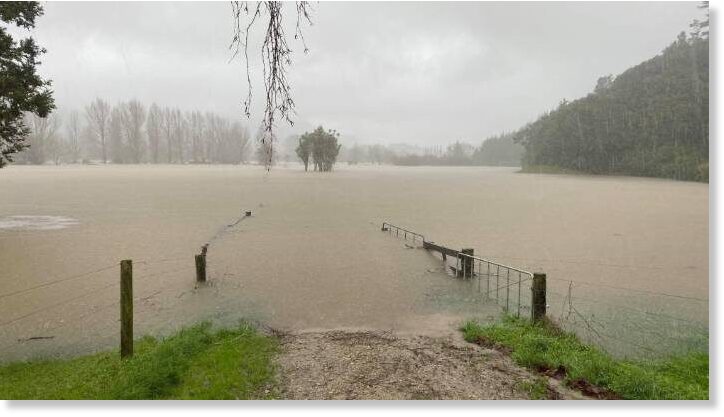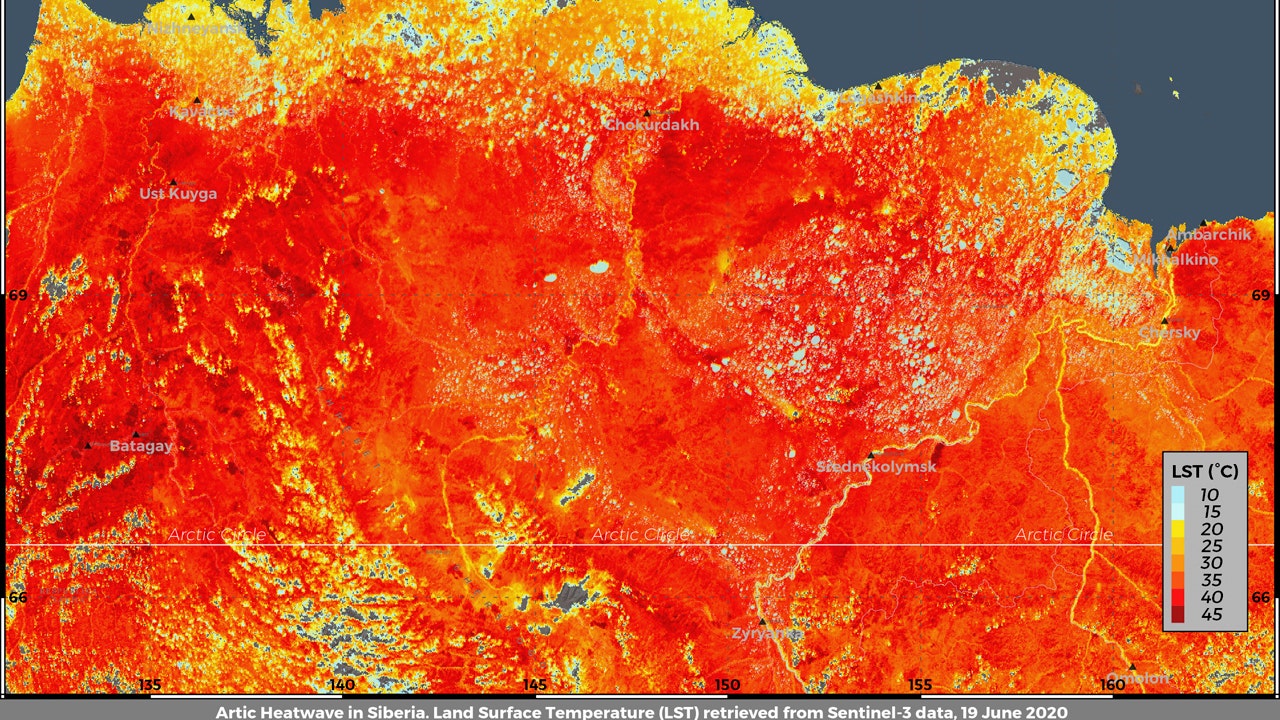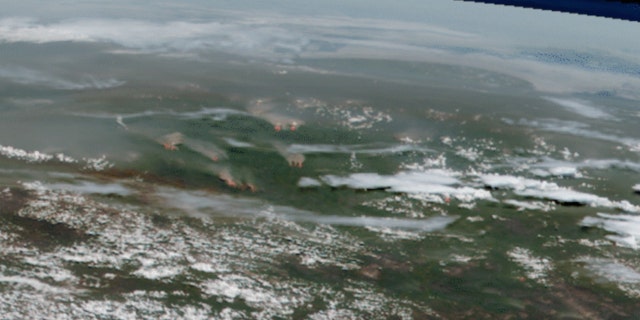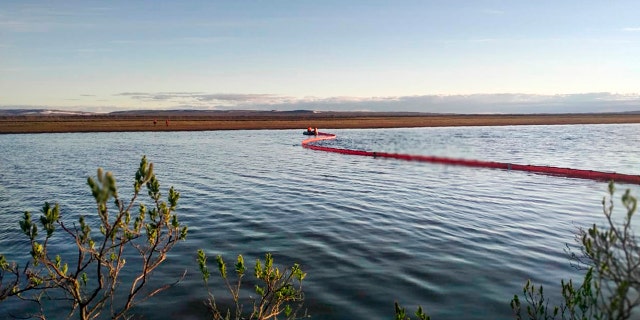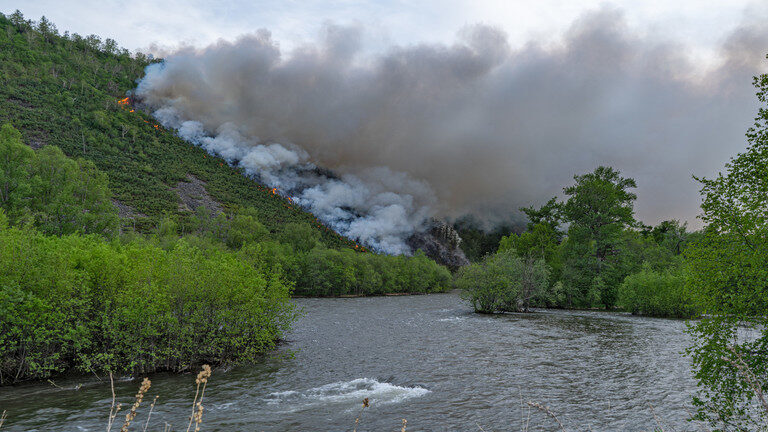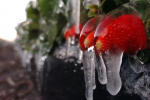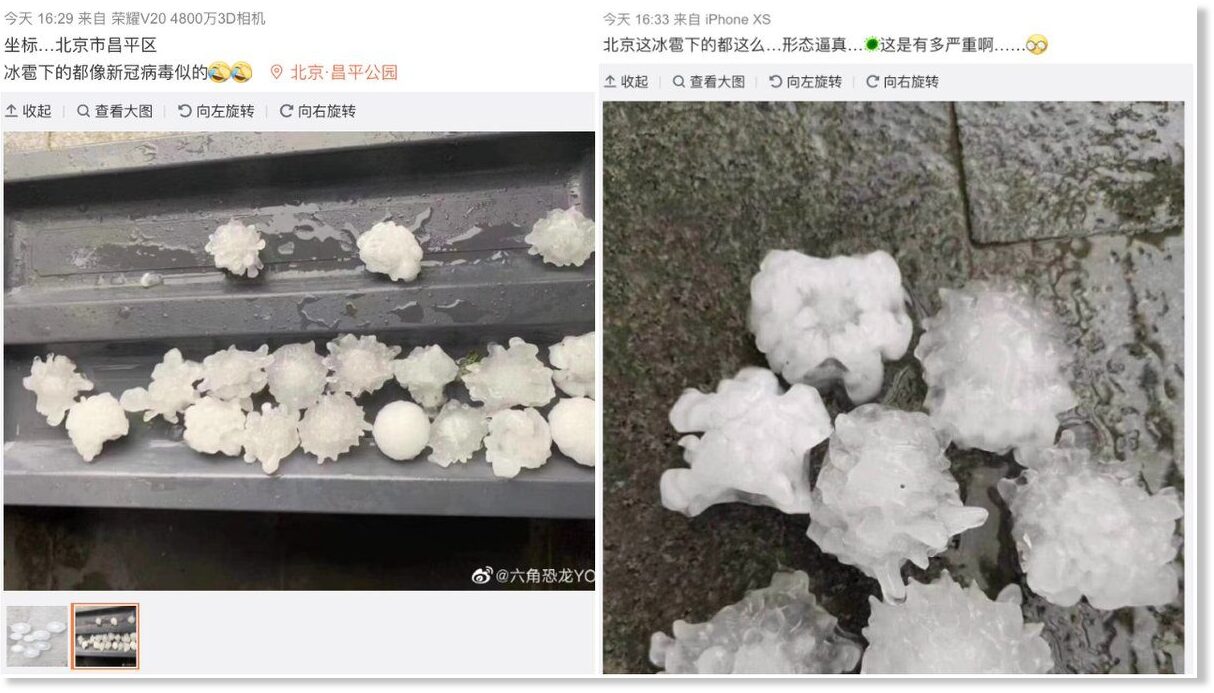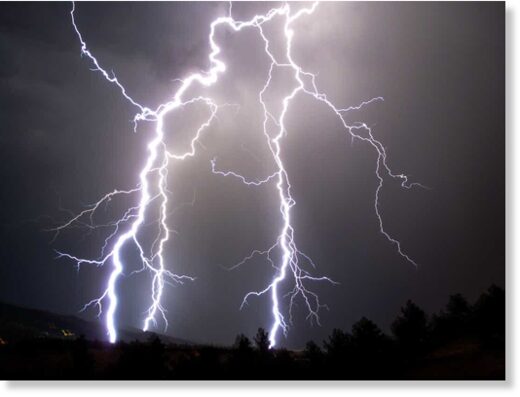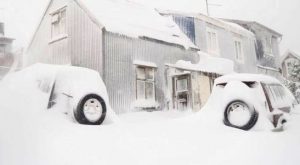The Arctic is feverish and on fire — at least parts of it are. And that’s got scientists worried about what it means for the rest of the world.

www.foxnews.com
The Arctic is on fire: Siberian heat wave alarms scientists
By DARIA LITVINOVA, SETH BORENSTEIN
| Associated Press
MOSCOW – The
Arctic is feverish and on
fire — at least parts of it are. And that has scientists worried about what it means for the rest of the world.
The thermometer hit a likely record of
38 degrees Celsius (100.4 degrees Fahrenheit) in the Russian Arctic town of
Verkhoyansk on Saturday, a
temperature that would be a fever for a person — but this is Siberia, known for being frozen. The
World Meteorological Organization said Tuesday that it’s looking to verify the
temperature reading, which would be unprecedented for the region north of the Arctic Circle.
“The Arctic is figuratively and literally on fire — it’s warming much faster than we thought it would in response to rising levels of carbon dioxide and other greenhouse gases in the atmosphere, and this warming is leading to a rapid meltdown and increase in wildfires,” University of Michigan environmental school dean Jonathan Overpeck, a climate scientist, said in an email.
WILDFIRES RAGE ACROSS SIBERIA AS RUSSIA SEES EXTRAORDINARY HEAT, TEMPERATURE OF 100 F DEGREES IN ARCTIC TOWN
“The record warming in Siberia is a warning sign of major proportions,” Overpeck wrote.
This photo taken on June 19, and provided by ECMWF Copernicus Climate Change Service shows the land surface
temperature in the Siberia region of Russia. (ECMWF Copernicus Climate Change Service via AP)
Much of Siberia had high temperatures this year that were beyond unseasonably warm. From January through May, the average temperature in north-central Siberia has been about 8 degrees Celsius (14 degrees Fahrenheit) above average, according to the climate science
non-profit Berkeley Earth.
“That’s much, much warmer than it’s ever been over that region in that period of time,” Berkeley Earth climate scientist Zeke Hausfather said.
In this handout photo provided by Olga Burtseva, an outside thermometer shows 86 F around 11 p.m in Verkhoyansk, the Sakha Republic, about 2900 miles northeast of Moscow, Russia, June 21. A Siberian town that endures the world's widest temperature range has recorded a new high amid a hear wave that is contributing to severe forest fires. (Olga Burtseva via AP)
Siberia is in the Guinness Book of World Records for its extreme temperatures. It’s a place where the thermometer has swung 106 degrees Celsius (190 degrees Fahrenheit), from a low of minus 68 degrees Celsius (minus 90 Fahrenheit) to now 38 degrees Celsius (100.4 Fahrenheit).
For residents of the Sakha Republic in the Russian Arctic, a heat wave is not necessarily a bad thing. Vasilisa Ivanova spent every day this week with her family swimming and sunbathing.
“We spend the entire day on the shore of the Lena River,” said Ivanova, who lives in the village of Zhigansk, 270 miles from where the heat record was set. “We’ve been coming every day since Monday.”
Smoke and flames from active fires burning across Sibera can be seen on this satellite imagery from June 21. (NOAA)
But for scientists, “alarm bells should be ringing,” Overpeck wrote.
Such prolonged Siberian warmth hasn’t been seen for thousands of years “and it is another sign that the Arctic amplifies global warming even more than we thought,” Overpeck said.
TEMPERATURE HITS 100 DEGREES FAHRENHEIT IN ARCTIC RUSSIAN TOWN
Russia’s Arctic regions are among the fastest warming areas in the world.
The temperature on Earth over the past few decades has been growing,
on average, by 0.18 degrees Celsius (nearly one-third of a degree Fahrenheit) every 10 years. But in Russia it increases by 0.47 degrees Celsius (0.85 degrees Fahrenheit) — and in the Russian Arctic, by 0.69 degrees Celsius (1.24 degrees Fahrenheit) every decade, said Andrei Kiselyov, the lead scientist at the Moscow-based Voeikov Main Geophysical Observatory.
“In that respect, we’re ahead of the whole planet,” Kiselyov said.
In this June 18, handout photo provided by the Russian Emergency Situations Ministry, workers prepare an area for reservoirs for soil contaminated with fuel at an oil spill outside Norilsk, 1,800 miles northeast of Moscow, Russia. (Russian Emergency Situations Ministry via AP)
The increasing temperatures in Siberia have been linked to prolonged wildfires that grow more severe every year and the thawing of the
permafrost — a huge problem because buildings and pipelines are built on them. Thawing permafrost also releases more heat-trapping gas and dries out the soil, which increases wildfires, said Vladimir Romanovsky, who studies permafrost at the University of Alaska Fairbanks.
“In this case it’s even more serious, because the previous winter was unusually warm,” Romanovsky said. The permafrost thaws, ice melts, the soil subsides and then it can trigger a feedback loop that worsens permafrost thawing and “cold winters can’t stop it,” Romanovsky said.
A
catastrophic oil spill from a collapsed storage tank last month near the Arctic city of Norilsk was partly blamed on melting permafrost. In 2011, part of a residential building in Yakutsk, the biggest city in the Sakha Republic, collapsed due to thawing and subsidence of the ground.
In this handout file photo dated June 2, provided by the Russian Marine Rescue Service, rescuers work to prevent the spread from an oil spill outside Norilsk, 1,800 miles northeast of Moscow, Russia. (Russian Marine Rescue Service via AP)
Last August, more than 4 million hectares of forests in Siberia were on fire, according to Greenpeace. This year the fires have already started raging much earlier than the usual start in July, said Vladimir Chuprov, director of the project department at Greenpeace Russia.
Persistently warm weather, especially if coupled with wildfires, causes permafrost to thaw faster, which in turn exacerbates global warming by releasing large amounts of methane, a potent greenhouse gas that’s 28 times stronger than carbon dioxide, said Katey Walter Anthony, a University of Alaska Fairbanks
expert on methane release from frozen Arctic soil.
“Methane escaping from permafrost thaw sites enters the atmosphere and circulates around the globe,” she said. “Methane that originates in the Arctic does not stay in the Arctic. It has global ramifications.”
And what happens in the Arctic can even warp the weather in the United States and Europe.
MAY 2020 TIED THE HOTTEST MAY ON RECORD, FORECASTERS SAY
In the summer, the unusual warming lessens the temperature and pressure difference between the Arctic and lower latitudes where more people live, said Judah Cohen, a winter weather expert at Atmospheric Environmental Research, a commercial firm outside Boston.
In this handout photo taken June 23, and provided by Olga Burtseva, a beach on the bank of Yana river is empty due to hot weather, during sunset outside Verkhoyansk, the Sakha Republic, about 2,900 miles northeast of Moscow, Russia. (Olga Burtseva via AP)
That seems to weaken and sometimes even stall the jet stream, meaning weather systems such as those bringing extreme heat or rain can stay parked over places for days on end, Cohen said.
According to meteorologists at the Russian weather agency
Roshydromet, a combination of factors — such as a high pressure system with a clear sky and the sun being very high, extremely long daylight hours and short warm nights — have contributed to the Siberian temperature spike.
“The ground surface heats up intensively. .… The nights are very warm, the air doesn’t have time to cool and continues to heat up for several days,” said Marina Makarova, chief meteorologist at Roshydromet.
Makarova added that the temperature in Verkhoyansk remained unusually high from Friday through Monday.
Scientists agree that the spike is indicative of a much bigger global warming trend.
“The key point is that the climate is changing and global temperatures are warming,” said Freja Vamborg, senior scientist at the
Copernicus Climate Change Service in the U.K. “We will be breaking more and more records as we go.”
“What is clear is that the warming Arctic adds fuel to the warming of the whole planet,” said Waleed Abdalati, a former NASA chief scientist who is now at the University of Colorado.









